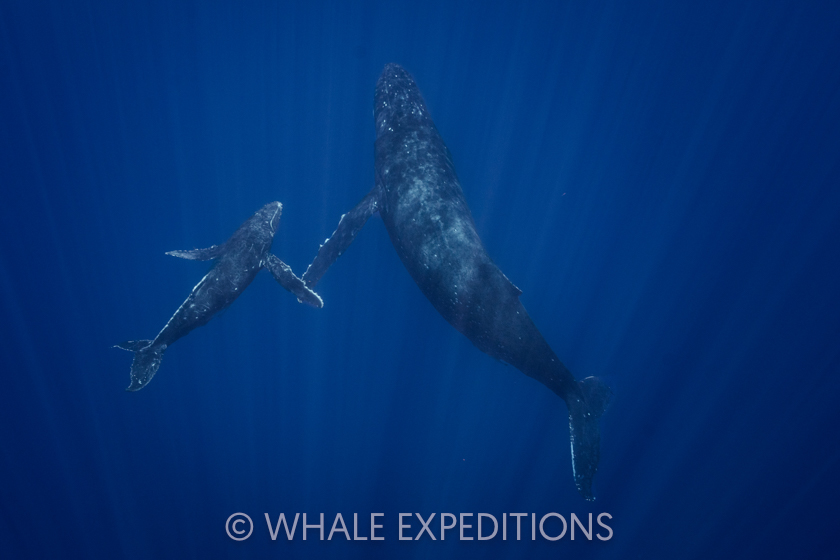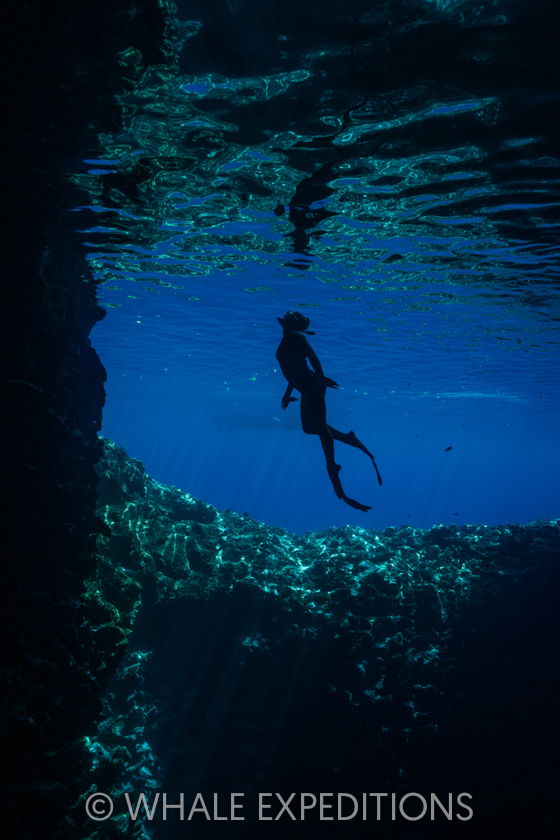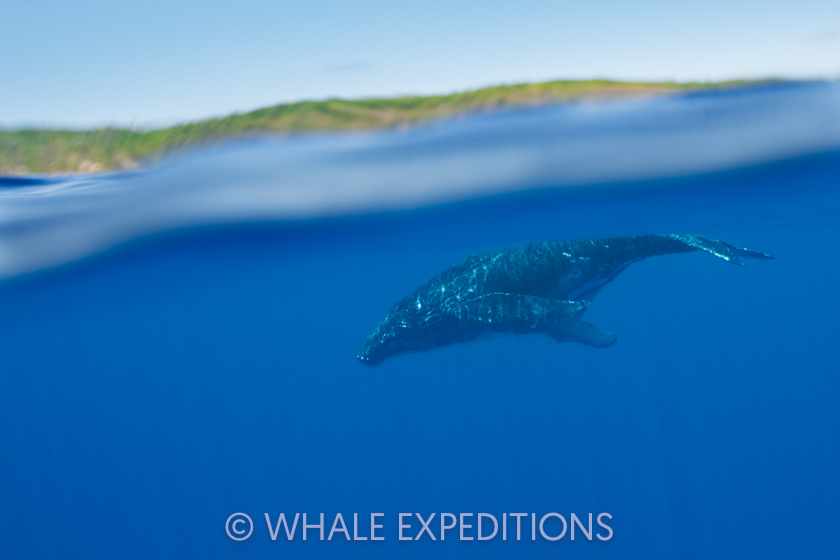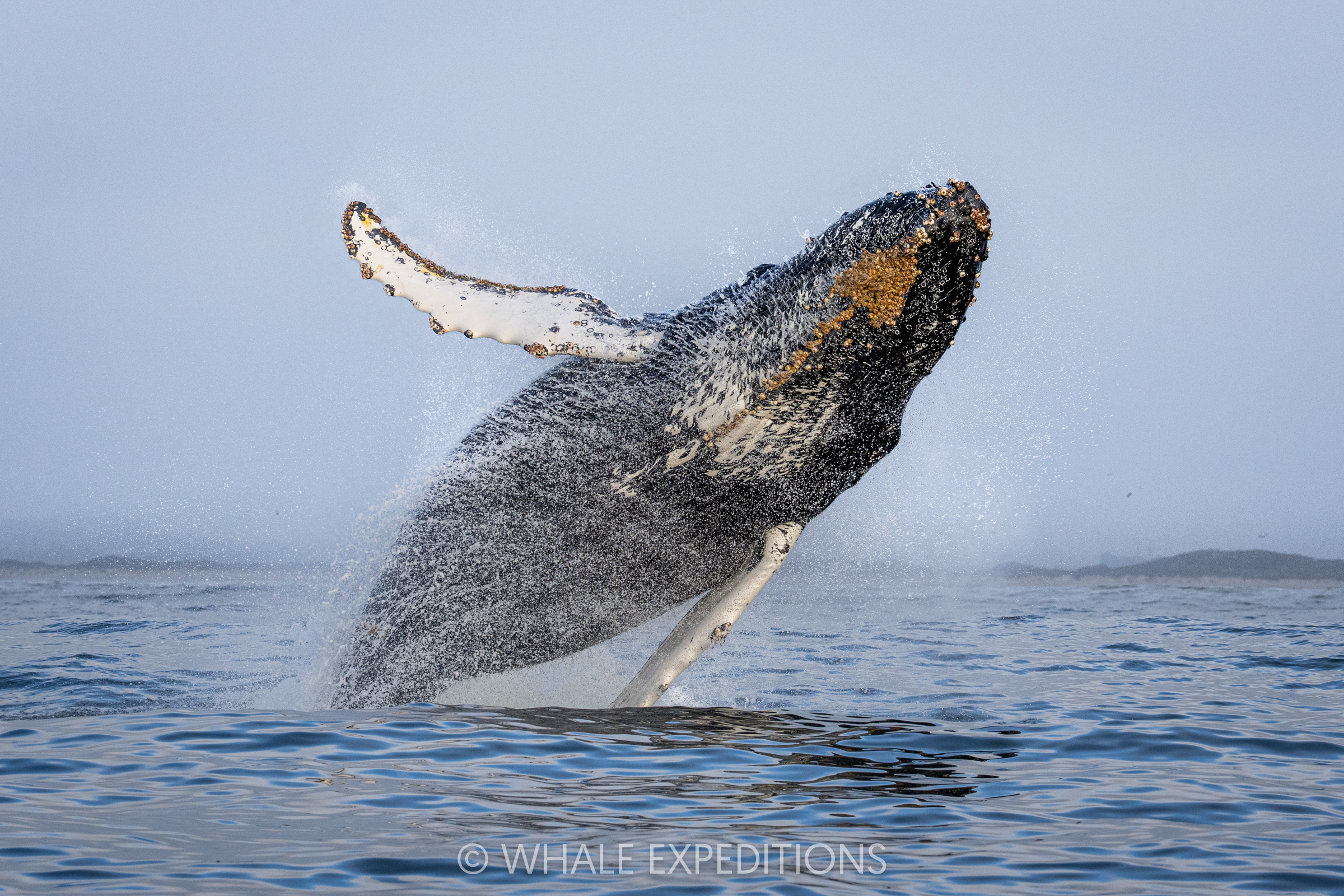For our inaugural two humpback whales of tonga photo tours, we visited the small island chain of Vava’u, in Tonga, located in the southern Pacific near Fiji. The antarctic population of humpback whales migrates to these isolated islands to breed and give birth every year. We are lucky enough to get to see these whales in their element, swimming with them in the warm tropical waters. We had two-back-to-back trips and this Humpback Whales of Tonga Photo Tour 2024 Trip Report will provide all the happenings of the first of the two trips (both were very similar however!)

Highlights of the 2024 Humpbacks of Tonga Photo Tour
Humpback Mother and Calves: We swam with and photographed four different mother and calf humpback whales, as they rested in the calm waters of tropical Tonga. The females come to the area to give birth and mate. The warm, shallow waters provide refuge from larger predators, allowing the calves to fatten up before migrating down south to Antarctic waters. The highlight for sure was a calf that actively wanted to engage with us, played around us, and curiously checked us out over and over again, coming just a couple of feet away from us.

Humpback Male Singer: We found one male singer, suspended upside down, forty feet below the water surface. We could feel his song through our chests, a truly remarkable experience.
Humpback Heat Run: Despite normally occurring mostly in the earlier part of the season, we saw at least four different heat runs, where male humpback whales chase a female, fighting in the process. These are always wild, as the whales are moving incredibly fast, and there are generally at least four whales. Our “largest” heat run had seven different humpback whales participating. One forty ton animal is impressive, seven are mind boggling.
Detailed Humpbacks of Tonga Trip Summary 2024
Day 1: Everyone arrived on the beautiful island atoll of Vava’u in Tonga via plane. After a short drive across the island, we jumped on a transfer boat to bring us to Kapa Island. We settled into Reef Resort, the only hotel on the island and a true gem in the area. Herwig, who runs the resort greeted us on their docks and their warm hospitality was felt throughout the week. Some people went for a snorkel in front of the resort, others relaxes in the comfy outdoor chairs.
Through our delicious dinner, we gave a presentation for the guests on the whales and how we would behave in the water with them. Everyone crashed rather quickly after dinner.

Day 2: Tongans devote Sunday to church and no business occurs in any capacity. We purposefully schedule this to be our first full day on the islands to be able to practice snorkeling techniques, as well as entry and exit strategies for the boat for the following days. The Reef Resort house reef is perfect for this since, besides getting comfortable in the water, we get to explore the beautiful coral garden found there. There were tons of fish, and we even saw a banded sea krait!
In the afternoon we led a photography lesson, and helped everyone set up their cameras to photograph underwater. We did a short hike across the island and ended up at a super calm bay with incredibly flat water. During another snorkel, we found a lionfish!

Day 3: This was our first day on the water. We got picked up at the hotel dock after a delicious breakfast by our local guide Tonga and captain Ashley, both incredible guides. We have picked them out in particular because we believe in their ethics with the whales, and the boat is comfortable and large. It was a rainy, windy morning, with lots of spray hitting the boat and us as we made our way out of the main island chain, towards the more outer lying spits of land. It didn’t take long before we saw our first whales. Whenever we would encounter whales, we would first assess if the situation was the right one to get into the water. This was a heat run, where multiple males chase a female in an effort to out-compete their rivals and hopefully earn mating rights with the female. Since only four people are allowed in the water at a time with the whales (we strongly believe in this rule!) it meant our group took turns, with three guests being joined by one of us as trip leaders. It is always absolutely incredible being in the water with animals so massive and watching the males following the females left us all breathless. Despite swimming with these animals many times, the experience truly never gets old.
After the heat run we ran into two adults resting on the surface and had nice water sessions with them for over an hour. It was time to go back to the resort. We edited photos and videos while listening to the waves gently hitting the beach, feet away. The day was capped off with another incredible dinner.
Day 4: We were greeted by beautiful calm sees and warming rays. We found a few different whales, some of which weren’t good contenders for swimming, so we moved on. Then, we hit the jackpot, and had what I would consider our best encounter of the trip. We found a mother and her calf, both extremely relaxed, yet awake. After we had multiple drops with them, the calf started to get more and more curious, rambunctious and playful. Say what you will about anthropomorphizing, but when you are swimming with whales, interacting, looking into their eyes, to me, it is impossible to think that there isn’t an emotional, complex thought process going on.

Often times, when you are with a mother and calf, the calf surfaces every 3-5 minutes, takes three breaths or so, and then swims back down to mom, often tucking below her chin. This calf came to the surface and simply wanted to interact. It swam right at us, to the point where I had to drag our guests out of the way of her pectoral fins, over and over again. It turned on its back, pectoral flippers out of the water, rolling around playfully. It did so for over thirty minutes. Its impossible to properly describe how I felt, but my heart was full of joy, especially for the guests to have this experience.

We finished our boat session at an absolutely gorgeous coral reef with pristine visibility and stunning shells.
Day 5: The day started by seeing a beautiful green sea turtle at the surface, from the boat. After that we found a male singer. Males sing only during the breeding season, so biologists believe it has to do with courting or some other mating ritual. When we entered the water, and remained still on the surface over the male, his song would make out chests and bellies vibrate. Absolutely incredible. The group on the boat not in the water would listen to his song via a hydrophone and speaker we had brought. It was such a unique and beautiful song.

We then found another mom and calf humpback which we stayed with for much of the day. The baby was in a breaching mood, and we were all cheering it on, telling it how good of a job it was doing. It was always a blast watching the other part of our group in the water, while half of us remained on the boat. Seeing the interactions from that perspective was just as unique as being in the water with them. Plus it was so fun to hear people recount their unique encounters once they were back on the boat. This calf didn’t interact with us in any direct way, but it took nothing away from the experience. In fact, half way through our drops with the calf, we watched it go fully to sleep. It was amazing watching it go through its surfacing, breathing, and diving process all while totally out. That hemisphere sleep whales have sure is useful!
Day 6: We went to a different part of the island, which was a cool change of scenery. The water visibility was just as high and we spent a large part of the day with a mother and her calf resting on this side of the island. These mother and calf sightings never ever got old!

After our fantastic whale swim session, we visited Swallows Cave which is a beautiful cave etched into the high cliffs of Kapa Island. Fish tend to hang out in it, which provides a fun snorkeling experience.

Day 7: Our last day on the water was a fantastic day to end the trip. When the day started Tonga turned to me and said, you know, the only thing we haven’t gotten yet is a mother, calf and escort. We both smiled at each other with a renewed purpose of finding just that. Escort humpbacks are generally males that are following females and their calves. Why they do this is still uncertain, though they probably act as protection for the mother and calf in some capacity. Not more than thirty minutes after our conversation, Tonga yells: Mother, calf and escort at 1 o’clock! We had completed the cycle so to speak. It was wonderful swimming with the three whales and seeing the slight difference in behavior with the escort whale, which almost always hung out way below the mother and calf.

Humpbacks of Tonga Photo Tour 2024 Species List
Mammals
| Insular Flying-fox | Pteropus tonganus |
| Humpback Whale | Megaptera novaeangliae |
| Spinner Dolphin | Stenella longirostris |
Birds
| Crimson-crowned Fruit-Dove | Ptilinopus porphyraceus |
| Pacific Imperial-Pigeon | Ducula pacifica |
| White-rumped Swiftlet | Aerodramus spodiopygius |
| Australasian Swamphen | Porphyrio melanotus |
| Wandering Tattler | Tringa incana |
| White Tern | Gygis alba |
| Black Noddy | Anous minutus |
| White-tailed Tropicbird | Phaethon lepturus |
| Red-tailed Tropicbird | Phaethon rubricauda |
| Red-footed Booby | Sula sula |
| Brown Booby | Sula leucogaster |
| Masked Booby | Sula dactylatra |
| Pacific Reef-Heron | Egretta sacra |
| Pacific Kingfisher | Todiramphus sacer |
| Eastern Wattled-Honeyeater | Foulehaio carunculatus |
| Polynesian Triller | Lalage maculosa |
| Red Junglefowl | Gallus gallus |

